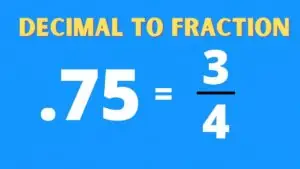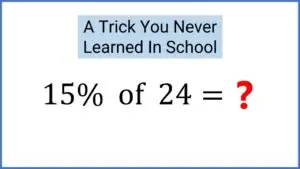In the realm of mathematics, the concept of division plays a crucial role in various calculations and problem-solving. When we talk about division, we often come across the term “divisor.” In this guide, we will explore the definition of a divisor, its significance in mathematical operations, and how it relates to other key terms such as factors, dividends, and quotients.

✅ AI Essay Writer ✅ AI Detector ✅ Plagchecker ✅ Paraphraser
✅ Summarizer ✅ Citation Generator
Understanding the Divisor
Definition and Representation
A divisor is simply defined as a number that divides another number. It can either divide the number completely or leave a remainder. In a division equation, the divisor is represented as follows:
Dividend ÷ Divisor = Quotient
For instance, let’s consider the number 20. When we divide 20 by 4, the result is 5. In this case, 4 is the divisor, as it divides 20 completely into 5 parts. Similarly, if we divide 20 by 5, the result is 4. Therefore, both 4 and 5 are divisors of 20.
Divisors and Factors
It is important to note that all factors of a number are divisors, but not all divisors are factors. A factor is a divisor that divides the number entirely without leaving a remainder. In our previous example of 20, the factors of 20 are 4 and 5 since they divide 20 without any remainder.
However, if we divide 20 by 3, the result is not a whole number but a decimal. Thus, 3 is not a factor of 20, but it still remains a divisor. This highlights the distinction between factors and divisors.
Finding Divisors and Factors
To find the divisors and factors of a given number, we can follow a systematic approach:
- Start with the number 1 and identify multiplication facts that result in the given number. For instance, let’s consider the number 12:
- 1 × 12 = 12
- 2 × 6 = 12
- 3 × 4 = 12
- Write down all the numbers involved in the multiplication facts. These numbers are the divisors of the given number.
In the case of 12, the divisors or factors would be 1, 2, 3, 4, 6, and 12.
Different Ways of Representing Divisors
In mathematical equations and representations, there are various styles for expressing divisors. Let’s explore some of the different methods:
- Division Equation: The standard form of representing a divisor is through a division equation, such as Dividend ÷ Divisor = Quotient.
- Multiplication Fact: Divisors can also be derived from multiplication facts that lead to the given number. For example, the multiplication facts for 12 are 1 × 12, 2 × 6, and 3 × 4, which give us the divisors 1, 2, 3, 4, 6, and 12.
- Special Cases: There are certain special cases worth mentioning:
- The number 1 is a divisor of all numbers since when the divisor is 1, the quotient remains the same as the dividend.
- The number itself is always a divisor of the number, resulting in a quotient of 1.
Practice Problems
- If 3 is the divisor, which of these would give the remainder as 2?
- 37
- 47
- 57
- 67
- Which of the following has the most number of divisors?
- 44
- 36
- 29
- 47
- What is the greatest common divisor of 13 and 30?
- 3
- 2
- 1
- 13
- Which of the following is NOT a factor of 14?
- 1
- 2
- 4
- 7
Conclusion
In summary, a divisor is a fundamental concept in mathematics that refers to a number dividing another number. It plays a crucial role in division equations, where it helps determine the quotient. Divisors are closely related to factors, which are divisors that divide a number entirely without leaving a remainder. By understanding the concept of divisors and factors, we can enhance our problem-solving abilities and strengthen our mathematical skills.
FAQ
What are the different ways of representing a divisor?
There are several ways to represent a divisor.
The first is Division Equation. Divisors are commonly represented in division equations as part of the division process. For example, in the equation Dividend ÷ Divisor = Quotient, the divisor is explicitly mentioned.
Another way is using a Multiplication Fact: Divisors can be derived from multiplication facts that lead to the given number. For instance, for the number 12, the multiplication facts 1 × 12, 2 × 6, and 3 × 4 provide us with the divisors 1, 2, 3, 4, 6, and 12.
Can a number be a divisor of itself?
Yes, a number can be a divisor of itself. When a number is divided by itself, the quotient is always 1. For example, 10 divided by 10 equals 1, and in this case, both 10 and 1 are divisors of 10.
What are some special cases related to divisors?
There are a few special cases worth mentioning:
- The number 1 is a divisor of all numbers. When the divisor is 1, the quotient remains the same as the dividend.
- The number itself is always a divisor of the number, resulting in a quotient of 1. For example, 20 divided by 20 equals 1.
How can you find the greatest common divisor of two numbers?
To find the greatest common divisor (GCD) of two numbers, you can use various methods such as:
- Prime Factorization: Find the prime factorization of both numbers and identify the common prime factors. Multiply these common factors to obtain the GCD.
- Euclidean Algorithm: Divide the larger number by the smaller number. Then, divide the remainder of the previous division by the smaller number. Repeat this process until the remainder becomes zero. The divisor of the last division step will be the GCD.
Are there any fun facts or patterns related to divisors in math?
Yes, there are some interesting patterns and facts related to divisors:
- If we double the divisor, the quotient will be halved. For example, dividing a number by 2 gives the same result as dividing it by 4 and then doubling the quotient.
- The sum of the divisors of a number is related to its prime factorization. This concept is known as the divisor function or the sum-of-divisors function.
- Perfect numbers are those whose proper divisors (excluding the number itself) add up to the number itself. For example, 6 is a perfect number since its proper divisors (1, 2, 3) add up to 6.
Remember that divisors play a fundamental role in mathematics and have various applications in number theory, algebra, and problem-solving.
Follow us on Reddit for more insights and updates.





Comments (0)
Welcome to A*Help comments!
We’re all about debate and discussion at A*Help.
We value the diverse opinions of users, so you may find points of view that you don’t agree with. And that’s cool. However, there are certain things we’re not OK with: attempts to manipulate our data in any way, for example, or the posting of discriminative, offensive, hateful, or disparaging material.